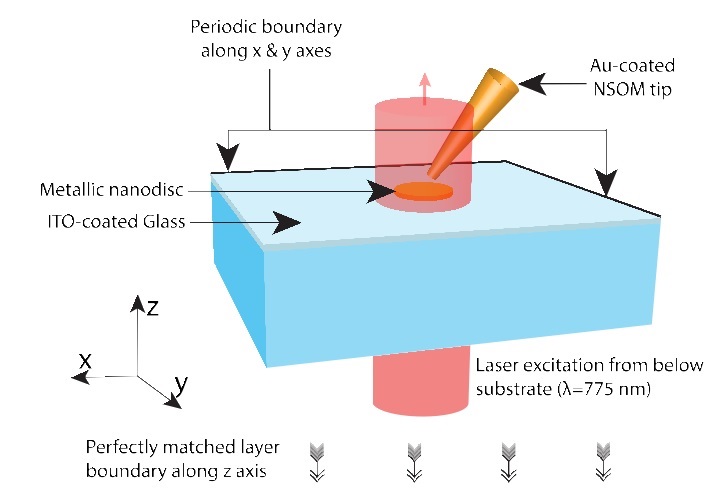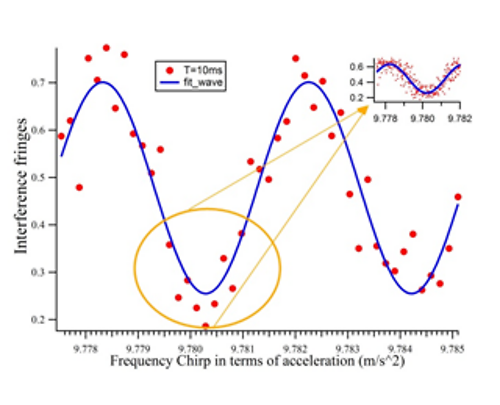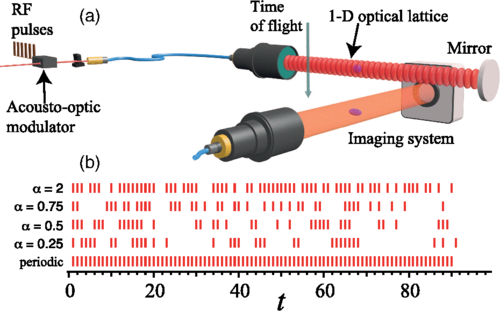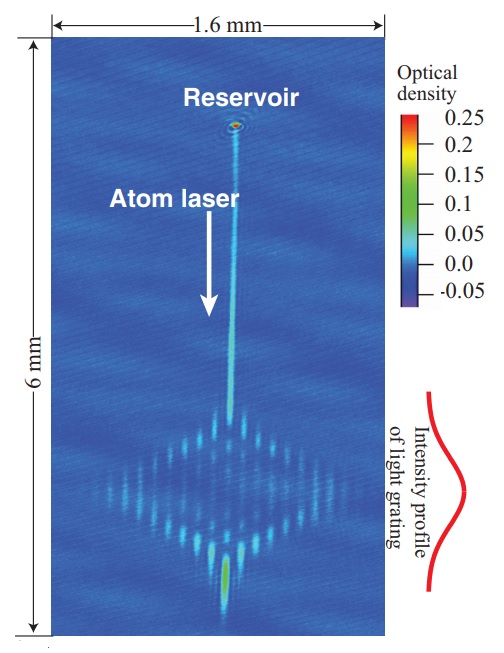Research activities at APQO Lab
Quantum computing aims to address a wide range of problems that are difficult to solve using a classical computer. These problems can be broadly classified into developing novel quantum algorithms and doing quantum simulations aimed at the discovery of new materials, drugs, and fundamental phenomena. Quantum computation can be physically implemented on an architecture satisfying the di Vincenzo criteria - well-defined qubits that can be scaled to a large number, the ability to initialize the qubits to the required state, long coherence times of the qubits, a universal set of unitary operations or quantum gates that can be applied on individual qubits to manipulate their state, and finally measurement of the qubit. Among the various platforms explored, ion traps stand out due to their exceptionally long coherence times and high fidelities of both single-qubit and multi-qubit gate operations.
In our lab, we aim to build a 20-qubit quantum computing platform using trapped 40Ca+ ions. Ions are confined in space using a combination of RF and DC electric fields in a blade trap. We have fabricated the individual components and assembled a fully functional ion trap setup. We have stably trapped linear ion crystals of more than 10 ions. Further, we have observed quantum jumps and performed measurements of the internal state of the ions. This is a key milestone in our experiment. Fig: Linear crystals of trapped 40Ca+ ions (left) and in-house built ion trap (right)

We aim to create strong electromagnetic coupling between neutral-atoms and localized Plasmons. We are setting up a new experiment to create and use ultracold samples of Strontium atoms for coupling to Plasmonic nanostructures. We aim to experimentally demonstrate these ideas proposed by other groups where it has been shown that, one can achieve strong coupling between atomic two level systems and nano-structures. Currently a setup is being built through funding from Department of Science and Technology to cool and trap Sr atoms. Parallely, we have designed and fabricated silver nanostructures for creating near field optical potentials and these near fields have been measured. The measurements are being validated against numerical simulations. Fig: A) Shows the conceptual schematic of the trapping potentials generated by the nano-disks B) Shows an SEM image of the fabricated silver nanodisks c) Shows an NSOM image of the light field (Image taken at Prof. Achanta Gopal's Group in TIFR, Mumbai)

At the Atomic Physics and Quantum Optics laboratory of IISER Pune, we have successfully built a BEC-based atom interferometer for measuring the gravitational acceleration in Pune. Currently, our experimental setup is capable of measuring the gravitational acceleration with a sensitivity of 1 ppm. Our immediate goals are to translate this system into a portable device and to push the sensitivity beyond ppb. This system also has the potential for measurement of inertial rotations precisely. Atom interferometer is a tool for precise measurement of gravitational acceleration, inertial sensing, magnetic field gradient measurements, and the fundamental physical constants very precisely. The accuracy of AI can go below 1 ppb (parts per billion) in a very compact size compared to an optical interferometer. This development is above TRL level 5 and will be translated into portable system through incubation of startup for translation and commercialization into product. Fig: Atom interferometer signal for measurement of local gravitational acceleration

Quantum chaos experiments with atom-optics kicked rotor
Superimposing a pulsating 1-D optical lattice onto a sample of ultracold atoms, an Atom-Optic Delta-Kicked Rotor System is being simulated. This work is being carried out in collaboration with the theory group of Dr. M.S. Santhanam (IISER-Pune) In APQO Lab, we use cold atoms to simulate quantum kicked rotor (QKR) to study the quantum chaos. A phenomenon called dynamical localization in QKR is equivalent to Anderson localization. QKR Hamiltonian can be mapped in Anderson Physics so we use it as quantum simulator for Anderson physics. Anderson Metal-Insulator Transition and other condensed matter phenomena can be easily simulated in QKR system. Currently, we are using this QKR system to tune the localization length (a parameter of dynamical localization) that will give us an insight that how much one can tune any quantum mechanical parameter without adding decoherency in quantum system. Fig: Schematic of the atom optic kicked rotor and the kick sequence for different Lèvi exponents. Figure taken from Nonexponential Decoherence and Subdiffusion in Atom-Optics Kicked Rotor
Superimposing a pulsating 1-D optical lattice onto a sample of ultracold atoms, an Atom-Optic Delta-Kicked Rotor System is being simulated. This work is being carried out in collaboration with the theory group of Dr. M.S. Santhanam (IISER-Pune) In APQO Lab, we use cold atoms to simulate quantum kicked rotor (QKR) to study the quantum chaos. A phenomenon called dynamical localization in QKR is equivalent to Anderson localization. QKR Hamiltonian can be mapped in Anderson Physics so we use it as quantum simulator for Anderson physics. Anderson Metal-Insulator Transition and other condensed matter phenomena can be easily simulated in QKR system. Currently, we are using this QKR system to tune the localization length (a parameter of dynamical localization) that will give us an insight that how much one can tune any quantum mechanical parameter without adding decoherency in quantum system. Fig: Schematic of the atom optic kicked rotor and the kick sequence for different Lèvi exponents. Figure taken from Nonexponential Decoherence and Subdiffusion in Atom-Optics Kicked Rotor

Atom interferometry with Rb BEC
An atom interferometer is a ubiquitous tool for measuring fundamental constants and inertial sensing. Traditional atom interferometers use a cloud of ultra-cold atoms, however a Bose-Einstein condensate(BEC) can further improve the readout of the interferometer. The thermal atom based interferometers also suffer from Dick effect, which limits their ability to probe slow variations in a physical parameter. We are working on an alternative to reduce the dead time of the interferometer by setting up light gratings which split and recombine an atom laser spilled from a 87Rb BEC reservoir, thus enabling a near continuous read-out. We have demonstrated the first step in this endeavor by diffracting an atom laser using a pulsed light grating. The population in different diffraction orders can be controlled precisely by controlling the ON-time of the lattice. Figure taken from Diffraction of an atom laser in the Raman-Nath regime
An atom interferometer is a ubiquitous tool for measuring fundamental constants and inertial sensing. Traditional atom interferometers use a cloud of ultra-cold atoms, however a Bose-Einstein condensate(BEC) can further improve the readout of the interferometer. The thermal atom based interferometers also suffer from Dick effect, which limits their ability to probe slow variations in a physical parameter. We are working on an alternative to reduce the dead time of the interferometer by setting up light gratings which split and recombine an atom laser spilled from a 87Rb BEC reservoir, thus enabling a near continuous read-out. We have demonstrated the first step in this endeavor by diffracting an atom laser using a pulsed light grating. The population in different diffraction orders can be controlled precisely by controlling the ON-time of the lattice. Figure taken from Diffraction of an atom laser in the Raman-Nath regime

Optical atomic clocks
Atomic clocks are based on extremely narrow linewidth optical transitions in atoms and ions. They are paving way for the next generation of time/frequency standards. Optical atomic clocks have been shown to have a factor of 100 to 1000 times better precision compared to microwave clocks. Several of these already form the secondary representation of the SI second. The si second is also to be defined wrt on optical transition by 2030. Besides these optical atomic clocks are already being used for geodesy and precision PNT applications. Reducing the SWAP and increasing the uptime of such clocks will unlock new applications made possible by the much better precision offered by such clocks. We are working on two of such leading candidates for atomic clocks: a) An optical lattice clock (with atoms) and b) trapped ion clocks.
Atomic clocks are based on extremely narrow linewidth optical transitions in atoms and ions. They are paving way for the next generation of time/frequency standards. Optical atomic clocks have been shown to have a factor of 100 to 1000 times better precision compared to microwave clocks. Several of these already form the secondary representation of the SI second. The si second is also to be defined wrt on optical transition by 2030. Besides these optical atomic clocks are already being used for geodesy and precision PNT applications. Reducing the SWAP and increasing the uptime of such clocks will unlock new applications made possible by the much better precision offered by such clocks. We are working on two of such leading candidates for atomic clocks: a) An optical lattice clock (with atoms) and b) trapped ion clocks.
Optical Lattice Clock
Optical lattice clocks based on neutral Strontium atoms uses the 698 nm narrow linewidth transition. Such lattice clocks have negligible uncertainty that is introduced due to light shift of the trapping dipole beams when the wavelength of the trapping light used is carefully considered (magic wavelength). They also benifit from the higher SNR offered by interrogation of several 1000 atoms per shot. This makes the instability of such clocks better than ion clocks. The relative error in frequency of such clocks is in the 10-19 regime. Fig: Blue MOT beams at 461 nm.Ca ion Clock
A single trapped calcium ion in a Paul trap can be used for developing an ion clock. The narrow linewidth electric quadrupole transition at 729 nm between the ground state S and a metastable state D is used as the frequency reference. The relative error in frequency of such clocks is in low 10-19 regime, making them the most precise clocks available. Ion clocks have lower stability than lattice clocks due to higher quantum projection noise. This is being mitigated through techniques trapping several ions at once to form a 'lattice ion clock'. We are exploring ways to develop and characterize an ion trap based clock.